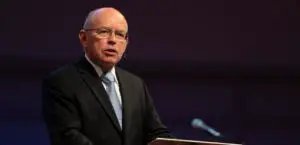In my last blog post I addressed the local church as the training ground for ministry. This post will look more specifically at the matter of pastoral mentoring for training gospel workers following the pattern of Jesus.
 Mentoring takes place in close association or “consociation,” as Günter Krallmann puts it. He notes that Jesus saw “consociation with him as the most fertile soil for his disciples’ growth relative to character, understanding and skill. Hence he made the experience of his with-ness the pivot of their training.” [1] Michael Crow concurs, adding that the limitation of content-driven training such as found in seminary classrooms, lectures, or conferences, calls for mentoring-driven training that adds the personal dimension to shape the mentees. He rightly calls for building training curriculum around the mentoring relationships just as Jesus did. “Jesus mentored in ways tailored to each individual.” [2] The local church provides the most consistent atmosphere for the one-on- one approach of mentoring since, as with Jesus and the Twelve and the Seventy, it includes mentoring in context of community. This position does not disparage intense academic training but rather puts it into perspective by insisting on the local church’s ability to shape ministers for the practical demands of ministry. Seminaries and Bible colleges supplement in partnership with the local church, where the church may lack the capacity to offer a thorough theological education. [3]
Mentoring takes place in close association or “consociation,” as Günter Krallmann puts it. He notes that Jesus saw “consociation with him as the most fertile soil for his disciples’ growth relative to character, understanding and skill. Hence he made the experience of his with-ness the pivot of their training.” [1] Michael Crow concurs, adding that the limitation of content-driven training such as found in seminary classrooms, lectures, or conferences, calls for mentoring-driven training that adds the personal dimension to shape the mentees. He rightly calls for building training curriculum around the mentoring relationships just as Jesus did. “Jesus mentored in ways tailored to each individual.” [2] The local church provides the most consistent atmosphere for the one-on- one approach of mentoring since, as with Jesus and the Twelve and the Seventy, it includes mentoring in context of community. This position does not disparage intense academic training but rather puts it into perspective by insisting on the local church’s ability to shape ministers for the practical demands of ministry. Seminaries and Bible colleges supplement in partnership with the local church, where the church may lack the capacity to offer a thorough theological education. [3]
Through contact with Jesus, E. F. Harrison explains, the Twelve “. . . almost unconsciously absorbed from him. They must have learned something about the art of meeting people and handling situations as they witnessed their Master threading his way through life with its maze of difficult circumstances occasioned by the public character of his work.” [4] Although inadequate on our part, the best way to maintain this similar strategy of Jesus with future gospel workers (pastors, church planters and revitalizers, and missionaries) is for faithful pastors to bring them into a mentoring relationship in a local church context. As with Jesus, it costs time and personal involvement; it demands working through the sometime messy nature of relationships but it yields much fruit in future years. Those mentored absorb from their mentors the relational skills, application of doctrine, and insights in handling difficulties by the “with-ness” in the mentoring relationship. Five replicable aspects of the impact of mentoring are observed from Jesus and his disciples.
 Mentoring takes place in close association or “consociation,” as Günter Krallmann puts it. He notes that Jesus saw “consociation with him as the most fertile soil for his disciples’ growth relative to character, understanding and skill. Hence he made the experience of his with-ness the pivot of their training.” [1] Michael Crow concurs, adding that the limitation of content-driven training such as found in seminary classrooms, lectures, or conferences, calls for mentoring-driven training that adds the personal dimension to shape the mentees. He rightly calls for building training curriculum around the mentoring relationships just as Jesus did. “Jesus mentored in ways tailored to each individual.” [2] The local church provides the most consistent atmosphere for the one-on- one approach of mentoring since, as with Jesus and the Twelve and the Seventy, it includes mentoring in context of community. This position does not disparage intense academic training but rather puts it into perspective by insisting on the local church’s ability to shape ministers for the practical demands of ministry. Seminaries and Bible colleges supplement in partnership with the local church, where the church may lack the capacity to offer a thorough theological education. [3]
Mentoring takes place in close association or “consociation,” as Günter Krallmann puts it. He notes that Jesus saw “consociation with him as the most fertile soil for his disciples’ growth relative to character, understanding and skill. Hence he made the experience of his with-ness the pivot of their training.” [1] Michael Crow concurs, adding that the limitation of content-driven training such as found in seminary classrooms, lectures, or conferences, calls for mentoring-driven training that adds the personal dimension to shape the mentees. He rightly calls for building training curriculum around the mentoring relationships just as Jesus did. “Jesus mentored in ways tailored to each individual.” [2] The local church provides the most consistent atmosphere for the one-on- one approach of mentoring since, as with Jesus and the Twelve and the Seventy, it includes mentoring in context of community. This position does not disparage intense academic training but rather puts it into perspective by insisting on the local church’s ability to shape ministers for the practical demands of ministry. Seminaries and Bible colleges supplement in partnership with the local church, where the church may lack the capacity to offer a thorough theological education. [3]Through contact with Jesus, E. F. Harrison explains, the Twelve “. . . almost unconsciously absorbed from him. They must have learned something about the art of meeting people and handling situations as they witnessed their Master threading his way through life with its maze of difficult circumstances occasioned by the public character of his work.” [4] Although inadequate on our part, the best way to maintain this similar strategy of Jesus with future gospel workers (pastors, church planters and revitalizers, and missionaries) is for faithful pastors to bring them into a mentoring relationship in a local church context. As with Jesus, it costs time and personal involvement; it demands working through the sometime messy nature of relationships but it yields much fruit in future years. Those mentored absorb from their mentors the relational skills, application of doctrine, and insights in handling difficulties by the “with-ness” in the mentoring relationship. Five replicable aspects of the impact of mentoring are observed from Jesus and his disciples.
First, Jesus provided an example for mentors to follow. By contrast, Jewish rabbis expected their disciples to attend to them. Jesus not only declared himself to be among them as one that served (Luke 22:26ff) but he also did it in practice. Contemporary mentors must never minimize the power of example in shaping their protégés. [5]
Second, Jesus demonstrated the priority of relationships with his mentees. The framework of discipleship demonstrated this priority, as the intimacy of living in relationship to Jesus and the small community of followers shaped life-long friendships. [6] Krallmann poignantly clarifies: “Yet Jesus did not go about establishing an academy, he went about establishing a fellowship; he first majored on making friends and only later on sending out apostles (cf. Mark 3:14).” [7] Contemporary mentors will make friendship the first order of attachment to mentees.
Second, Jesus demonstrated the priority of relationships with his mentees. The framework of discipleship demonstrated this priority, as the intimacy of living in relationship to Jesus and the small community of followers shaped life-long friendships. [6] Krallmann poignantly clarifies: “Yet Jesus did not go about establishing an academy, he went about establishing a fellowship; he first majored on making friends and only later on sending out apostles (cf. Mark 3:14).” [7] Contemporary mentors will make friendship the first order of attachment to mentees.
Third, Jesus modeled love and service in leadership. As Jesus taught on true greatness when correcting the sons of Zebedee jockeying for lordly positions in the future kingdom, he explained that it is to be found in service: “just as the Son of Man did not come to be served, but to serve, and to give His life a ransom for many” (Matt 20:20–28). Jesus’ life and teaching modeled generosity, forgiveness, service, and humility (Luke 16:1–31; 17:1–10; 18:9–30). [8] Mentors must be conscious of modeling service and love with their mentees, for this shapes them to do the same. [9]
Fourth, Jesus mentored with the cross in view. Jesus journeyed toward the destiny with the cross where he secured redemption for his people. He regularly pointed toward that destiny as he trained his disciples (Luke 9:22, 43–45; 18:31–34). Likewise, he demonstrated that the terms of following him require a cross (Luke 9:23). [10]
Mentors do well to keep their mentees focused on the sufficiency of Christ in his death and resurrection, while also modeling the necessity of dying to selfish desires and embracing adversities, trials, and hardships as the means of throttling the natural tendency toward vanity.
Fifth, Jesus’ mentoring included correction. When John sought to hinder those attempting to cast out demons in Jesus’ name, Jesus corrected him (Luke 9:49–50). When James and John wanted to call fire down from heaven because of perceived insult from some Samaritans, Jesus told them, “You do not know what kind of spirit you are of” (Luke 9:51–56). He “exposed and rebuked and corrected” the sins and infirmities of the disciples. Mentors must seek to correct sinful tendencies in their mentees in order to uproot attitudes and rash behavior that would hinder their ministries and distract from the gospel (Gal 6:1–5). [11]
Fourth, Jesus mentored with the cross in view. Jesus journeyed toward the destiny with the cross where he secured redemption for his people. He regularly pointed toward that destiny as he trained his disciples (Luke 9:22, 43–45; 18:31–34). Likewise, he demonstrated that the terms of following him require a cross (Luke 9:23). [10]
Mentors do well to keep their mentees focused on the sufficiency of Christ in his death and resurrection, while also modeling the necessity of dying to selfish desires and embracing adversities, trials, and hardships as the means of throttling the natural tendency toward vanity.
Fifth, Jesus’ mentoring included correction. When John sought to hinder those attempting to cast out demons in Jesus’ name, Jesus corrected him (Luke 9:49–50). When James and John wanted to call fire down from heaven because of perceived insult from some Samaritans, Jesus told them, “You do not know what kind of spirit you are of” (Luke 9:51–56). He “exposed and rebuked and corrected” the sins and infirmities of the disciples. Mentors must seek to correct sinful tendencies in their mentees in order to uproot attitudes and rash behavior that would hinder their ministries and distract from the gospel (Gal 6:1–5). [11]
In the intimacy of one-on-one and small group mentoring, local church mentors are well positioned to impact their mentees. Their example in relationships, love, service, and dying to self gives future gospel workers a better picture of how to live faithfully as servants of Christ.
Phil Newton
____________________
[1] Günter Krallmann, Mentoring for Mission: A Handbook on Leadership Principles Exemplified by Jesus Christ (Waynesboro, Ga.: Gabriel Publishing, 2002), 53.
[2] D. Michael Crow, “Multiplying Jesus Mentors: Designing a Reproducible Mentoring System— A Case Study” Missiology; An International Reivew XXXVI.1 (January 2008): 93.
Ibid., 92.
[3] As an example, see Warren Bird, “Churches Taking Back the Task of Theological Education,” Leadership Network [cited 12 Jan 2013]: n.p. Online: leadnet.org//resources/advance/churches_ taking_back_the_task_of _theological_education, discusses Sojourn Church’s (Louisville, Ken.) church- based theological education in partnership with the Southern Baptist Theological Seminary.
[4] E. F. Harrison, A Short Life of Christ (Grand Rapids: Zondervan, 1968), 143.
[5] Martin Hengel, The Charismatic Leader and His Followers(Eugene, Ore.: Wipf and Stock, 1968), 51–52.
[6] Michael J. Wilkins, “Disciple, Discipleship,” in Evangelical Dictionary of World Missions (eds. A. Scott Moreau, Harold Netland, and Charles Van Engen; Grand Rapids: Baker, 2000): 279.
[7] Krallmann, Mentoring for Mission, 55; he further writes, “A mentoree is not a project but a person. Mentoring implies more than a lecturer-student connection, it is friendship” (italics added).
[8] Darrell Bock, Luke 1:1–9:50 (ECNT; Grand Rapids: Baker, 1994), 24.
[9] Derek Tidball, Ministry by the Book: New Testament Patterns for Pastoral Leadership (Downers Grove: IVP Academic, 2008), 121, explains that Paul viewed service as “the constant subtext of his understanding of Christian leadership.” In Paul’s theology, the gospel requires service.
[10] J. Schneider, “Stauro,” TDNT, VII:578–579, identifies six possible interpretations of taking up one’s cross, but concludes that it is “a vivid metaphor for self-denial.”
[11] Harrison, A Short Life of Christ, 144–145.
[1] Günter Krallmann, Mentoring for Mission: A Handbook on Leadership Principles Exemplified by Jesus Christ (Waynesboro, Ga.: Gabriel Publishing, 2002), 53.
[2] D. Michael Crow, “Multiplying Jesus Mentors: Designing a Reproducible Mentoring System— A Case Study” Missiology; An International Reivew XXXVI.1 (January 2008): 93.
Ibid., 92.
[3] As an example, see Warren Bird, “Churches Taking Back the Task of Theological Education,” Leadership Network [cited 12 Jan 2013]: n.p. Online: leadnet.org//resources/advance/churches_ taking_back_the_task_of _theological_education, discusses Sojourn Church’s (Louisville, Ken.) church- based theological education in partnership with the Southern Baptist Theological Seminary.
[4] E. F. Harrison, A Short Life of Christ (Grand Rapids: Zondervan, 1968), 143.
[5] Martin Hengel, The Charismatic Leader and His Followers
[6] Michael J. Wilkins, “Disciple, Discipleship,” in Evangelical Dictionary of World Missions (eds. A. Scott Moreau, Harold Netland, and Charles Van Engen; Grand Rapids: Baker, 2000): 279.
[7] Krallmann, Mentoring for Mission, 55; he further writes, “A mentoree is not a project but a person. Mentoring implies more than a lecturer-student connection, it is friendship” (italics added).
[8] Darrell Bock, Luke 1:1–9:50 (ECNT; Grand Rapids: Baker, 1994), 24.
[9] Derek Tidball, Ministry by the Book: New Testament Patterns for Pastoral Leadership (Downers Grove: IVP Academic, 2008), 121, explains that Paul viewed service as “the constant subtext of his understanding of Christian leadership.” In Paul’s theology, the gospel requires service.
[10] J. Schneider, “Stauro,” TDNT, VII:578–579, identifies six possible interpretations of taking up one’s cross, but concludes that it is “a vivid metaphor for self-denial.”
[11] Harrison, A Short Life of Christ, 144–145.




















